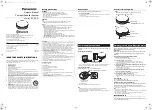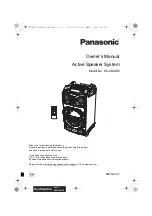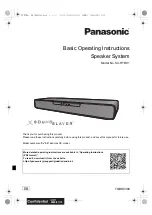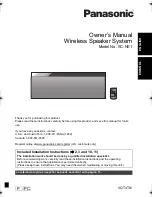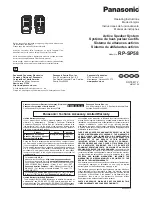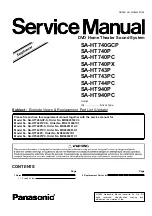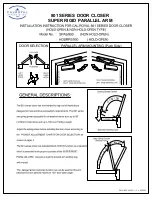
MAINTENANCE
D-5
D-5
NA-5
3. Pull the gear from the shaft using the
screws as a pulling device.
4. Be certain woodruff key (8) is properly
located on the shaft. Screw the
adapter plate and motor assembly
mounting screws into the new fiber
input helical gear from the stenciled
side and place the gear on the shaft.
Replace plain washer (9), tighten the
hex nut (1), and remove the adapter
plate and motor assembly mounting
screws from the gear.
5. After noting the relation of the adapter
plate with the motor leads, remove
the adapter plate from the wire drive
motor. See Figure D.6. Support the
pinion properly and, with the proper
size punch, drive the roll pin that
holds the pinion out of the shaft. Pull
the pinion off. Install the new pinion
and replace the roll pin. Replace the
adapter plate in its original location.
6. Cover the teeth of the motor pinion
and the input gear with a non-fluid
molydisulfide type grease such as
Non-Fluid Oil Corporation’s A-29
Special/MS Lubricant. This grease
can be scooped from the cavity of the
gear case.
7. Reassemble the motor on the gear
box; make sure the gears mesh
properly and the adapter plate
locating bead is in its cavity. Replace
and tighten the four screws removed
in step 1.
8. Jumper on wire speed meter PC
board must be properly positioned for
the gear ratio and drive rolls being
used (See the wiring diagram for the
wire speed meter PC board.)
WIRE DRIVE MECHANISM
Drive mechanisms for three wire size ranges
are available: 0.035 through 0.052 in.
(0.9 through 1.3 mm), 1/16 through 3/32 in.
1.6 through 2.4 mm), and 3/32 through
7/32 in. (2.4 through 5.6 mm). If changing to
wire sizes outside this range, change the
drive rolls and the incoming and outgoing
guide tubes. Also change the gear ratio as
necessary.
The electrode is driven by gripping
between the grooved drive rolls and
spring-loaded idle roll. Replace the drive
rolls when they become worn. The drive rolls
for 1/16 in. (1.6 mm) and larger diameter
electrodes have two sets of teeth so they
can be reversed once before they must be
replaced.
WIRE STRAIGHTENERS
Solid Electrode
Periodically inspect the slide bushing at the
top of the straightener and the ingoing wire
guide at the bottom of the straightener for
signs of wire milling. If necessary, rotate the
guide to present an unworn surface. To
reverse the slide bushing for a fresh wear
surface, remove the cross adjustment screw
and turn the bushing over.
Flux-Cored Electrode
Severe wear at the “V” groove in the curved
arm of the straightener can result in wire
wander at the arc. Periodically check the
groove and replace the arm when badly
worn. Also replace the ingoing guide at the
top of the straightener if it shows signs of
wire milling.
WIRE
DRIVE
MOTOR
SHAFT
ADAPTOR
PLATE
PINION
ROLL PIN
MOUNTING
SCREW (X3)
FIGURE D.6 – DRIVE MOTOR PINION
GEAR REMOVAL.
Return to Section TOC
Return to Section TOC
Return to Section TOC
Return to Section TOC
Return to Master TOC
Return to Master TOC
Return to Master TOC
Return to Master TOC































